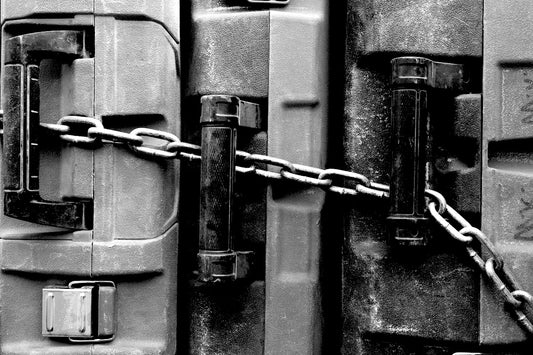Through the years, doing SEO work and hanging out on the Internet I became quite Internal Linking Savvy -- I am far from perfect for sure, but I can share a bit of my knowledge with you.
I will try to keep this post as simple as possible, but if you have any questions, feel free to ask me directly (on Twitter for example).
What this blog post is about?
Let's dive deep into the world of internal linking and get the answers to all the burning questions you might have. By the end of this article, you'll have a solid grasp of how internal linking works from an SEO perspective and why it's so important -- according to me.
- Understanding the purpose of internal linking
- Examining how internal linking can enhance the user experience on a website
- Selecting which pages to link to internally
- Determining the appropriate number of internal links to include on a page
- Comparing the use of exact match or partial match anchor text for internal links
- Utilizing internal linking to organize and structure a website
1. Understanding the purpose of internal linking
Internal linking is the process of linking from one page on a website to another page on the same website. Internal links are used to help users navigate a website and to help search engines understand the structure of a website.
Connecting the dots (and the pages)
Internal linking is all about connecting the pages within your own website, unlike external linking which is when you link to a webpage on a different domain. It's a crucial part of website design and SEO, as it helps search engines understand how your website is organized and the connections between different pages.
Purposes of Internal Linking would be in geenral:
Ease the navigation thanks to internal links
Making it easy to navigate: Internal linking helps users find their way around the website by providing links to other pages within the same domain. This is especially helpful for larger websites with many pages.
Reinforce the UX
Boosting the user experience: Internal linking helps users discover related content on a website, enhancing their overall experience. For instance, a user reading an article about a certain topic can easily access another article on a related topic without having to search or leave the website.
Improve ranking and topical relevance (for sure!)
Improving SEO: Internal linking gives search engines a way to crawl and index the pages on a website, helping them understand the structure and organization of the site. It also helps search engines understand the relationships between different pages on a website, which can affect their ranking in search results.
I run some experiments and projects on this topic, and I can tell you that internal linking is a great tool to improve the topical relevance of your website.
Interlinking for better indexation?
Increasing the number of crawled pages: Internal linking can help increase the number of pages that are indexed by search engines, particularly for websites with many pages.
Sharing link equity: Link equity is the value that a link passes to the page it's linking to. Internal linking can help distribute link equity between different pages on a website, which can help those pages rank higher in search results.
Keep in mind that you should create internal links for the user first and after for search engines. Yes it's a SEO guy telling you that 😉! But choose the anchor text on your primary or secondary keywords -- for SEO purposes, off course.
Reducing the crawl depth
Reducing the crawl depth: Internal linking is the tool for helping you reduce the crawl depth of your website, which can help search engines crawl and hopefully index the pages on a website more efficiently. Let's keep in mind that not all pages need to be indexed, nore crawled.
2. Examining how internal linking can enhance the user experience on a website
Internal linking can enhance the user experience on a website by helping users find content that is similar to the content they are currently viewing.
Let's get some proper example with a blog post and a product page.
Help navigation for blog & for products
Internal links are used to help users navigate a website. They can be used to help users find related content on a website, to help users find content that is similar to the content they are currently viewing.
A good example would be: a blog post on a similar topic or a product page for either a similar product or a complementary product.
How to achieve better UX?
Use anchor text that makes sense: The text you use in your links should clearly describe what the linked page is all about. This makes it easy for users to understand the relevance of the link and decide whether to click on it.
Link to useful content: When you're linking to other pages, make sure they're relevant and useful to the user. This keeps users engaged and interested in your content.
Organize your links logically: Internal linking should be organized in a way that makes sense with the overall structure of your website. This makes it easy for users to find what they're looking for. Topic related or complementary page to what the user is currently browsing.
Use title attributes: Title attributes are used to provide additional information about a link when a user hovers over it. This can be useful for users who are visually impaired or who are using a screen reader.
3. Selecting which pages to link to internally
That's usually the hardest part, but once you figured that out, it's pretty easy to do & scale.
From where to link?
You will have different type of links that you can create -- I am simplifying it in two main categories -- site-wide links and body content links.
Site-wide links
These links are usually placed in the header or footer of a website. They are used to link to "important" -- note the quotes -- pages on a website, such as the homepage, the contact page, your main products or the about page.
Body content links
That's were you will have the most impact from a topic perspective thanks to the context of both the anchor text and the content around it.
You could said I forgot the breadcrumb links, and you could be rigth, but for me it's more structure optimization, even if it's a good practice to have them optimized for internal linking.
4. Determining the appropriate number of internal links to include on a page
You may ask yourself: "How many internal links should I include on a page?".
The answer is: "It depends" 😝. No, really, it really depends on the size of your website, the size of the content on the page, the structure of this page and the context of the link you are trying to add on it.
5. Comparing the use of exact match or partial match anchor text for internal links
Comparing to external links, internal links are a bit more permissive when it comes to anchor text. You can easily use exact match or partial match anchor text for internal links -- and I would recommend it as much as possible with your primary or secondary keywords.
You've got two main options
There are two main options for anchor text: exact match and partial match. Each of these options has its pros and cons, and the best choice for your website will depend on your specific goals and needs.
The Exact Match (aka your primary or secondary keyword)
Exact match anchor text is when the anchor text is identical to the keyword or phrase you're trying to target. For example, if you have a webpage about "how to train your dog" and you want to link to another webpage about "dog training tips," you might use the anchor text "dog training tips" to link to that webpage. The advantage of using exact match anchor text is that it can be very effective at signaling to search engines what the linked webpage is about, which can improve the ranking of the linked webpage for that particular keyword or phrase. However, using too much exact match anchor text can look spammy or artificial to search engines, which can lead to a lower ranking or penalty.
The Partial Match
Partial match anchor text, on the other hand, is anchor text that includes the target keyword or phrase but is not an exact match. For example, instead of using "dog training tips" as the anchor text for the aforementioned link, you might use something like "learn more about dog training" or "get expert dog training advice." The advantage of using partial match anchor text is that it can look less spammy or artificial to search engines and be more attractive and engaging to users. Additionally, it can give you more flexibility and creativity in your linking strategy. However, it may not be as effective at signaling to search engines what the linked webpage is about and can be more challenging to come up with a variety of partial match anchor text.
What's the best option?
Ultimately, the best choice will depend on your specific goals and needs, and it's important to find a balance between optimizing for search engines and creating a user-friendly website.


